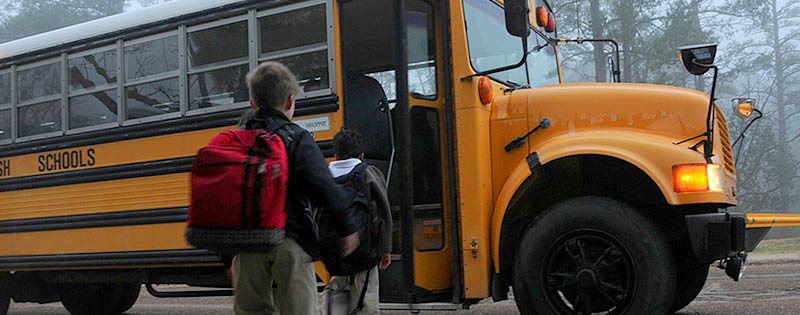by Brent Hearn •
Happy September! Most schools in the U.S. have been in full swing for weeks now, and the rest are about to be. The beginning of classes means the end of summer camps and family vacations and the start of a new school year, rife with all the promise and challenges that come with it.
Unfortunately, a new academic calendar brings bright-eyed learners something more than just old friends and new classes: neck and back pain. Fear not, however—we’re here to share some advice that could help. After all, kids are already juggling heavy homework loads (don’t get us started) and navigating complex social structures at school. They shouldn’t have to add unnecessary pains and strains to the list.
Tech Neck
Even if you’ve never heard of “tech neck,” there’s a good chance you’ve experienced it. Tech neck refers to pain and soreness in the neck and shoulders due to improper posture while using digital devices. Using a device in a way that causes us to bend our necks at exaggerated angles increases the strain on our neck muscles, which can lead to numerous problems both now and down the road.
Between texting their friends, playing games, and sitting in front of a computer at school during class and while doing homework, most kids get a lot of screen time. All that bending and slumping can wreck their necks, so it’s important to encourage good screen habits.
- Remind your child to bring the device to their face rather than vice versa.
- Lead them through some spinal stretches. Consider it some bonus family time! (Plus, you probably need them as much as they do!)
- Keep an eye on their posture and gently correct it when you see them slumping.
- Give their home workspace an ergonomic makeover. Make sure the top of their computer screen is at eye level and the keyboard is at elbow height.
Burdensome Backpacks
When was the last time you picked up your child’s backpack? Some kids overstuff their bags like they’re trying to avoid baggage fees before a two-week transcontinental trip.
Though an increased adoption of technology in schools (sometimes) reduces the need to lug around so many textbooks, that may not be stopping your child from cramming their backpack full of devices, notebooks, snacks, clothes, water bottles, and apparently every one of their worldly possessions. (Seriously, kids…you’re not hopping a freight train to join the circus. You’ll be back home in a few hours.)
All this extra weight can place a huge burden on growing bodies. It can cause back pain, neck pain, poor posture from compensating for the extra weight, and a condition called apophysitis (an inflammation of growth cartilage) in the shoulders. Here are a few things you can do to lighten the load:
- Weigh the backpack when full. Backpacks shouldn’t weigh more than 10–15% of a child’s body weight.
- Place heavier items nearer the child’s body.
- Your child’s backpack should have a padded back and shoulder straps. It shouldn’t be wider or longer than their torso.
- Make sure they use both shoulder straps—and the waist strap if it has one—so the weight is evenly distributed.
- If it’s feasible, consider a rolling backpack. (If they have to climb stairs at school, this is probably a no-go.)
- Encourage them to actually use their locker if they have access to one. The best way to win the weight game is not to play (or at least not to play more than necessary).
Sources:
3 Healthy Habits to Help Prevent ‘Tech Neck’ in Kids
7 Tips for a Lighter, Safer School Backpack









 ▶︎
▶︎  Why is the Discount Challenge prize amount $15,024? Because that is the average “per-occurrence” fine for Medicare inducements. That’s not $15,024 per patient, that’s not per provider, that’s PER VISIT. Stinks, doesn’t it? To us, the prize amount is worth the investment if we can help our profession better understand proper discounting.
Why is the Discount Challenge prize amount $15,024? Because that is the average “per-occurrence” fine for Medicare inducements. That’s not $15,024 per patient, that’s not per provider, that’s PER VISIT. Stinks, doesn’t it? To us, the prize amount is worth the investment if we can help our profession better understand proper discounting.